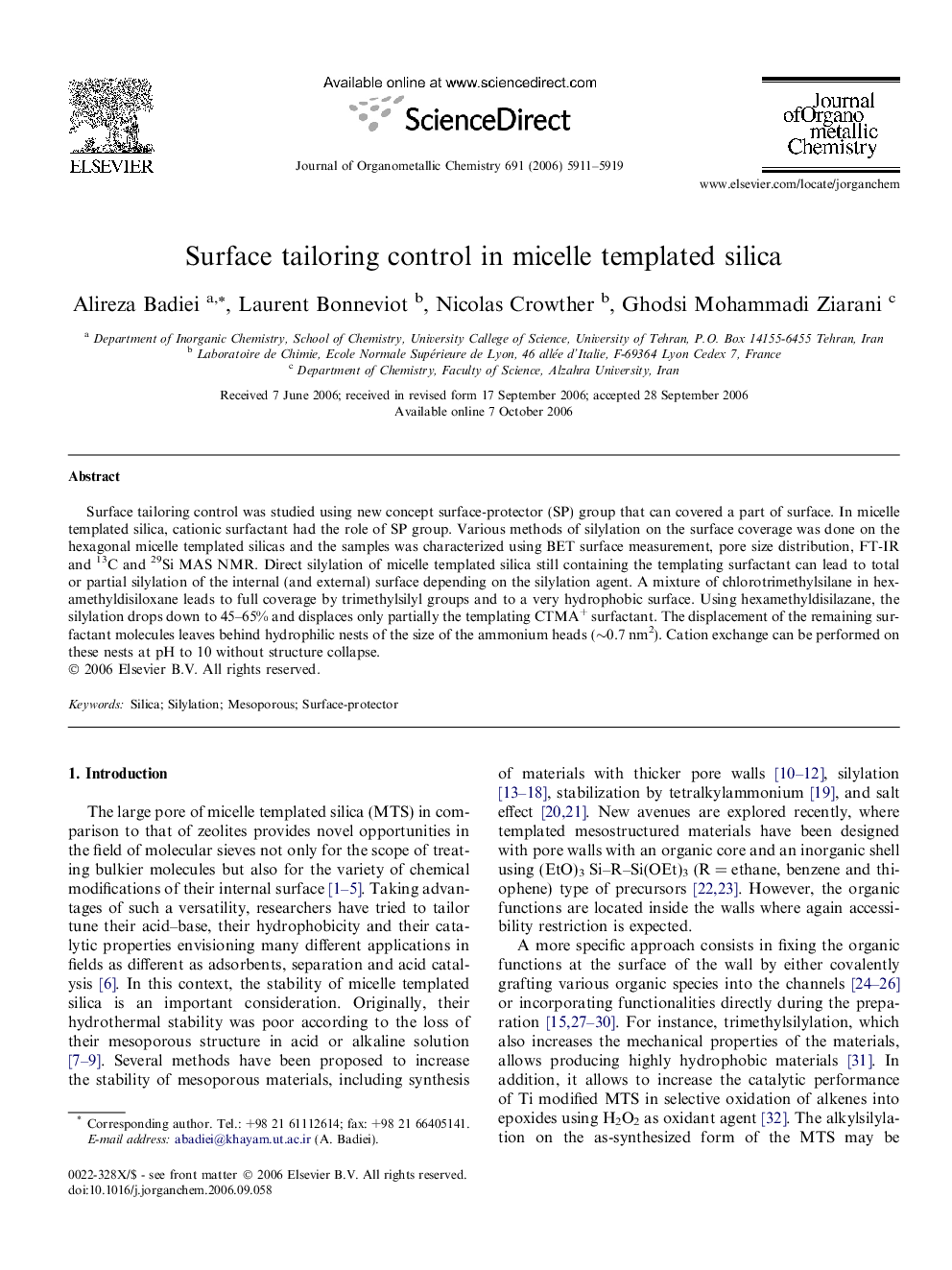| Article ID | Journal | Published Year | Pages | File Type |
|---|---|---|---|---|
| 1328419 | Journal of Organometallic Chemistry | 2006 | 9 Pages |
Surface tailoring control was studied using new concept surface-protector (SP) group that can covered a part of surface. In micelle templated silica, cationic surfactant had the role of SP group. Various methods of silylation on the surface coverage was done on the hexagonal micelle templated silicas and the samples was characterized using BET surface measurement, pore size distribution, FT-IR and 13C and 29Si MAS NMR. Direct silylation of micelle templated silica still containing the templating surfactant can lead to total or partial silylation of the internal (and external) surface depending on the silylation agent. A mixture of chlorotrimethylsilane in hexamethyldisiloxane leads to full coverage by trimethylsilyl groups and to a very hydrophobic surface. Using hexamethyldisilazane, the silylation drops down to 45–65% and displaces only partially the templating CTMA+ surfactant. The displacement of the remaining surfactant molecules leaves behind hydrophilic nests of the size of the ammonium heads (∼0.7 nm2). Cation exchange can be performed on these nests at pH to 10 without structure collapse.
Graphical abstractSurface tailoring control was studied using new concept surface-protector (SP) group that can covered a part of surface. In micelle templated silica (MTS), cationic surfactant had the role of SP group. The SP groups prevent to surface tailoring by silylating agents. Thus the uncovered surface will be silylated, and then the SP group will be removed. It was demonstrated that controlled silylation may yield hydrophilic islands of very small size within the channel of MTS.Figure optionsDownload full-size imageDownload as PowerPoint slide
